A complete guide to Humpty Doo, NT
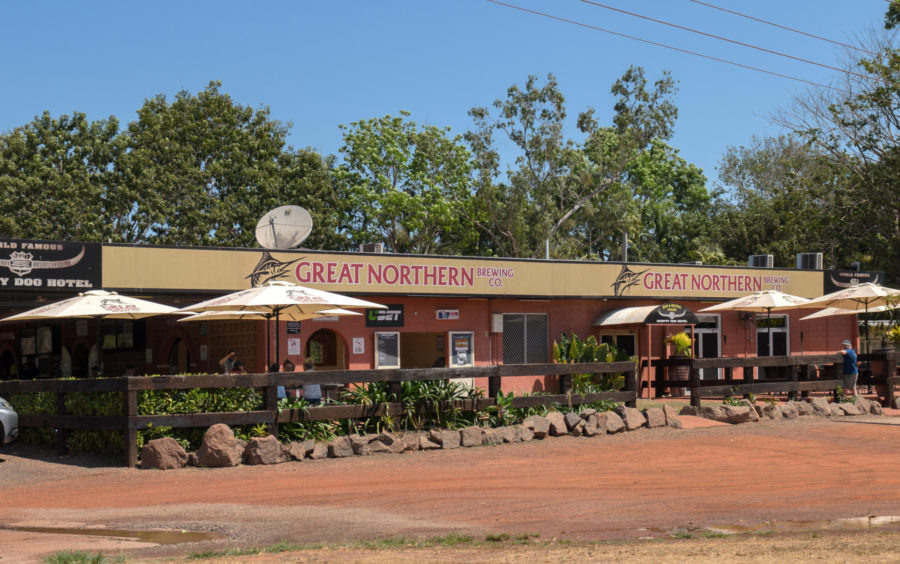
Consider the value of an Aussie ‘Big Thing’.
Most Northern Territory visitors roar through the town of Humpty Doo en route to Kakadu National Park and the Adelaide River’s famed jumping crocodiles. But some, intrigued by the town’s remarkable Big Boxing Croc and tropical agriculture history, find it to be a roadside stop worth taking.
Humpty Doo, known locally as “The Doo”, is only a short drive from Darwin’s centre and, in recent times, has become a commuter town for the Territory capital.
Once known for its ambitious commercial rice-farming project, it now supports market gardening (mostly for Darwin), commercial agriculture and roadside tourism for visitors travelling to Kakadu.
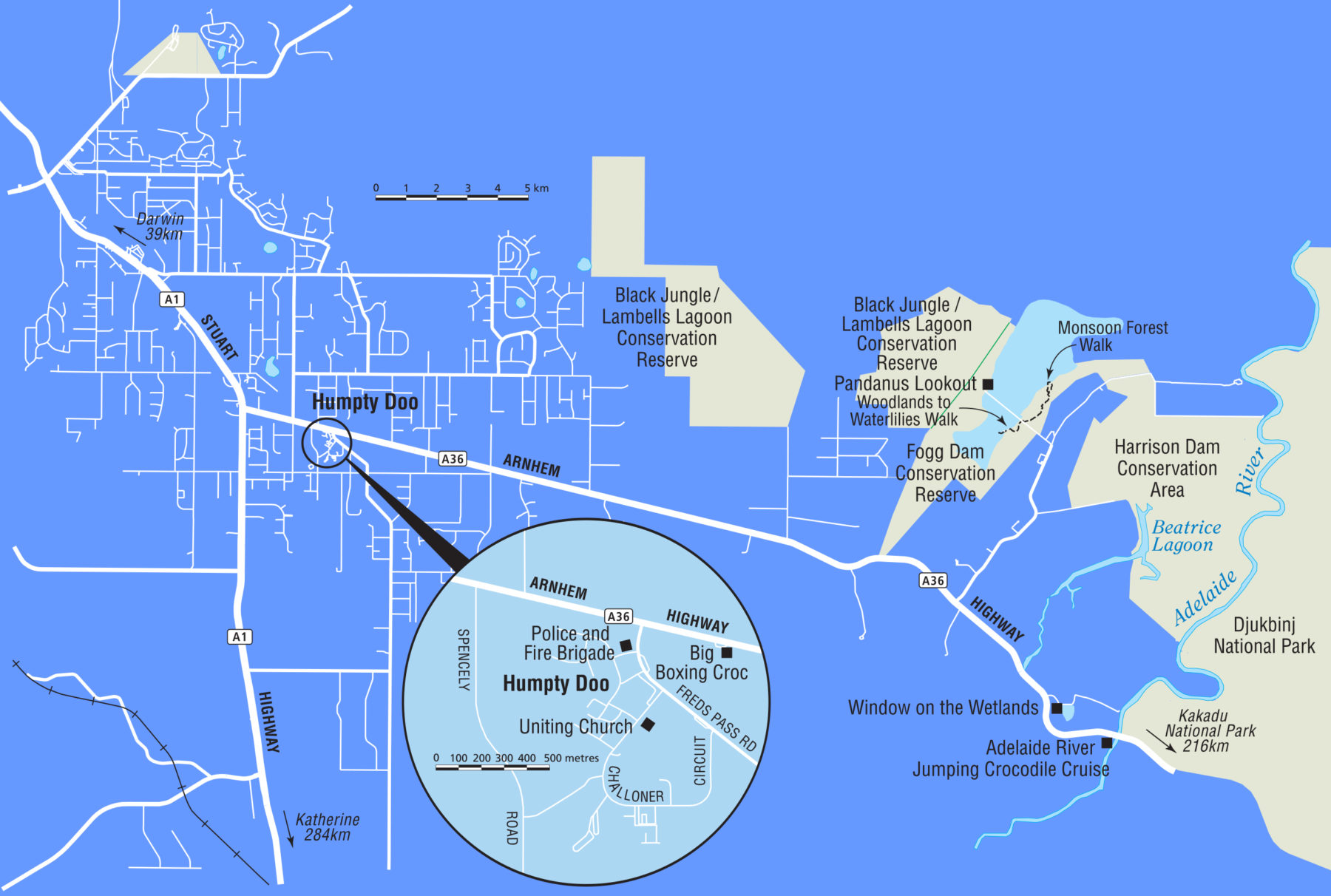
Location:
Humpty Doo is 39km from Darwin via the Stuart and Arnhem highways.
Origin of Name:
Humpty Doo takes its name from a station in the district called Umpity Doo. The origin of the station’s name is unknown.
Useful Websites:
Places of interest
1. Big Boxing Croc
As Humpty Doo evolved into a commuter town for people working in Darwin, the Big Boxing Croc became a very identifiable icon for locals. But it’s now also developed into one of the must-see highlights for anyone ticking off Australia’s list of ‘Big Thing’ tourist attractions.
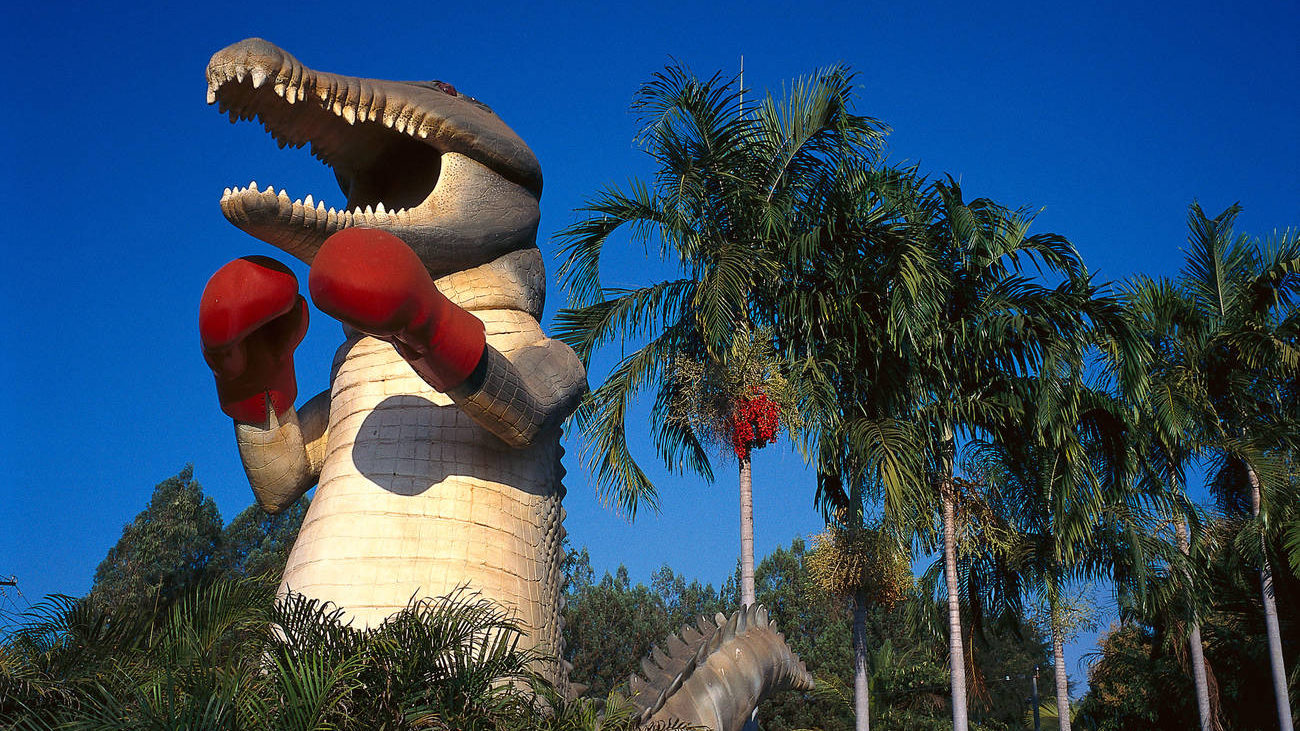
Inspired by the Boxing Kangaroo logo used for Australia’s successful 1983 America’s Cup challenge, it stands 13m high and wears red boxing gloves. Hugely expensive to build, the structure was the brainchild of Marshall Brentnall who was running the Humpty Doo Bush Shop at the time. In 1987 he commissioned a Sydney company to build the Big Boxing Croc out of fibreglass. The challenge was to build something strong enough to withstand the full savagery of tropical cyclones, which probably explains why the croc cost a staggering $137,000.
2. Humpty Doo Uniting Church
Located off the Arnhem Highway at 15 Challoner Circuit, the design of the Humpty Doo Living Water Uniting Church is clear acknowledgement of the high temperature and humidity of the area. It’s an unusual open-air, tropical place of worship without walls. The congregation certainly gets a breeze with the sermon.
3. Fogg Dam Conservation Reserve
About 22km east of Humpty Doo along the Arnhem Highway is a turn-off to Fogg Dam. This large water reservoir was built in the 1950s as part of the Humpty Doo rice project. When the project failed it became a bird sanctuary, particularly during the dry season. Access is across a low dam wall, which can become inaccessible during heavy rains.
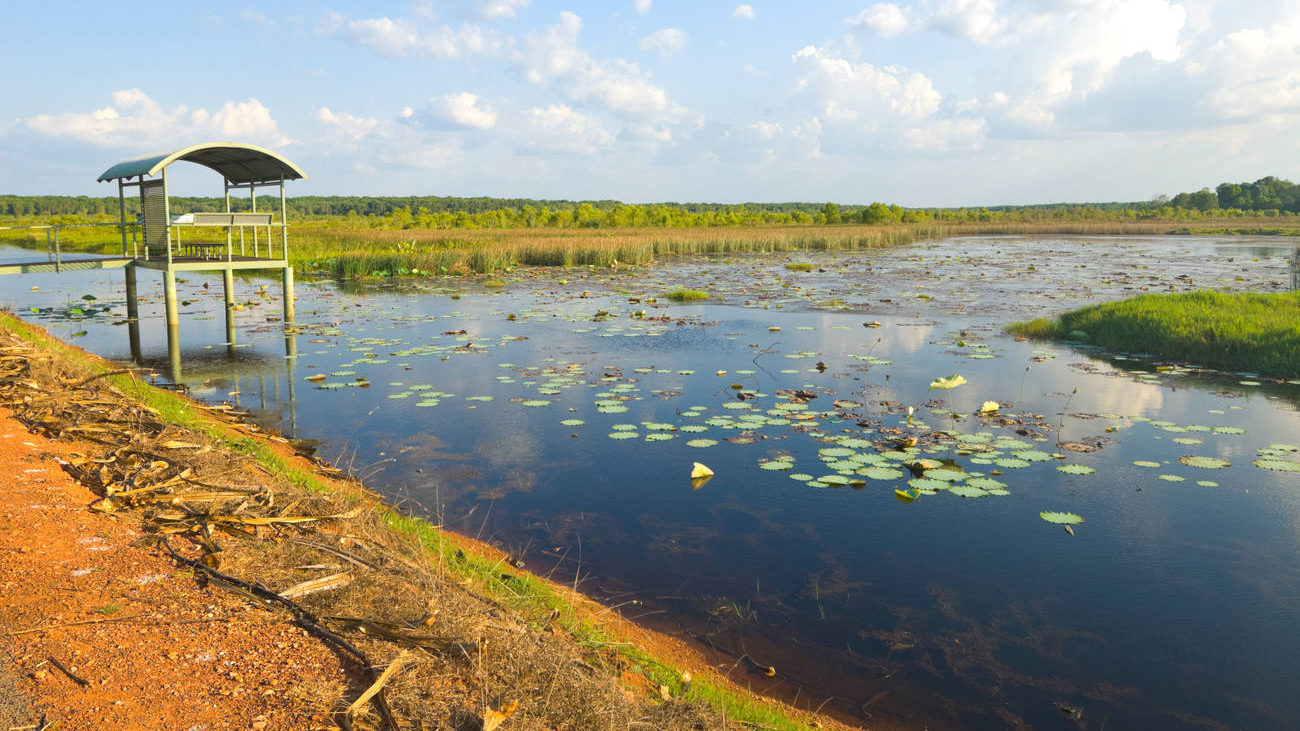
The reserve has three birdwatching walks: Woodlands to Waterlilies Walk is an easy 45-minute 2.2km circuit, that leads through woodlands along the dam’s edge; Monsoon Forest Walk – 2km and taking 45 minutes – heads onto the floodplain and is only accessible in the Dry; and Pandanus Lookout offers views across the dam.
4. Jumping Croc Cruises
Adelaide River Cruises, a company located 30km east of Humpty Doo along the Arnhem Highway, and a number of other tour operators, offer rides up and down the Adelaide River.
The tours, which run daily between May and November, have become famous for the jumping crocs that have been known to lift themselves right out of the water for pieces of meat lowered on rods from the side of the boat.

5. Window on the Wetlands Visitor Centre
Enjoy a wide view of the Adelaide River floodplains from this interpretive centre and learn from the local Limilngan-Wulna people about the northern coastal wetlands environment. Cultural talks and interactive displays provide insights into the floodplains, seasonal changes and wildlife.
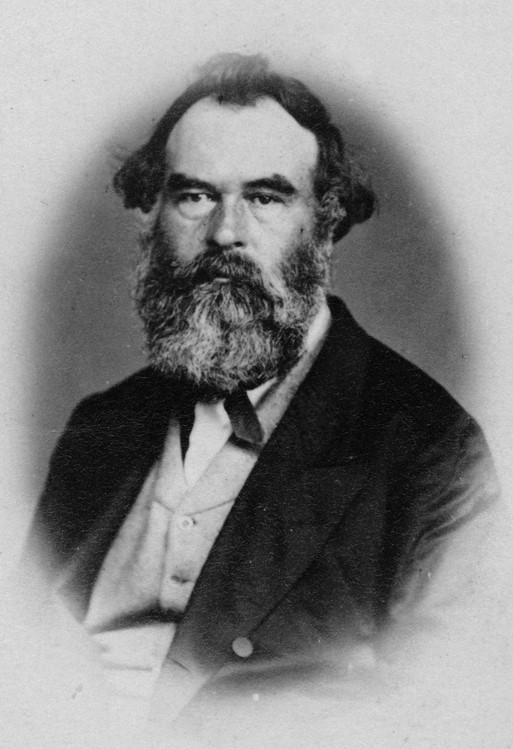
History
Before Europeans arrived, the area was home to the Woolna people.
Among the first Europeans to the area was Boyle Travers Finniss (left), who in 1864 explored the Adelaide River after serving as the first premier of SA.
By 1869 George Goyder, Surveyor-General of SA, had subdivided land around today’s Humpty Doo into 10sq.ml (2590ha) parcels.
In the 1870s and ’80s, German botanist Dr Maurice Holtze carried out experiments in Darwin on the region’s ability to grow tropical crops.
By the 1880s Chinese farmers were growing rice in the area.
By 1910 the settlement was known as Umpity Doo.
In 1954, after considerable CSIRO experimentation, an Australia–US company called Territory Rice Ltd was established, with plans to produce a commercial rice crop.
In the mid-1950s an RAAF airfield construction squadron built Fogg Dam to provide water for the Humpty Doo Rice Project.
In 1955–56,Territory Rice Ltd received agricultural leases of 3030sq.km on the floodplain.
By 1959 the rice fields had been abandoned. That year Fogg Dam was declared a Bird Protection District.
In 1962 Territory Rice Ltd forfeited the land to the government.
In 1967 a general store was opened on the road to Kakadu.


